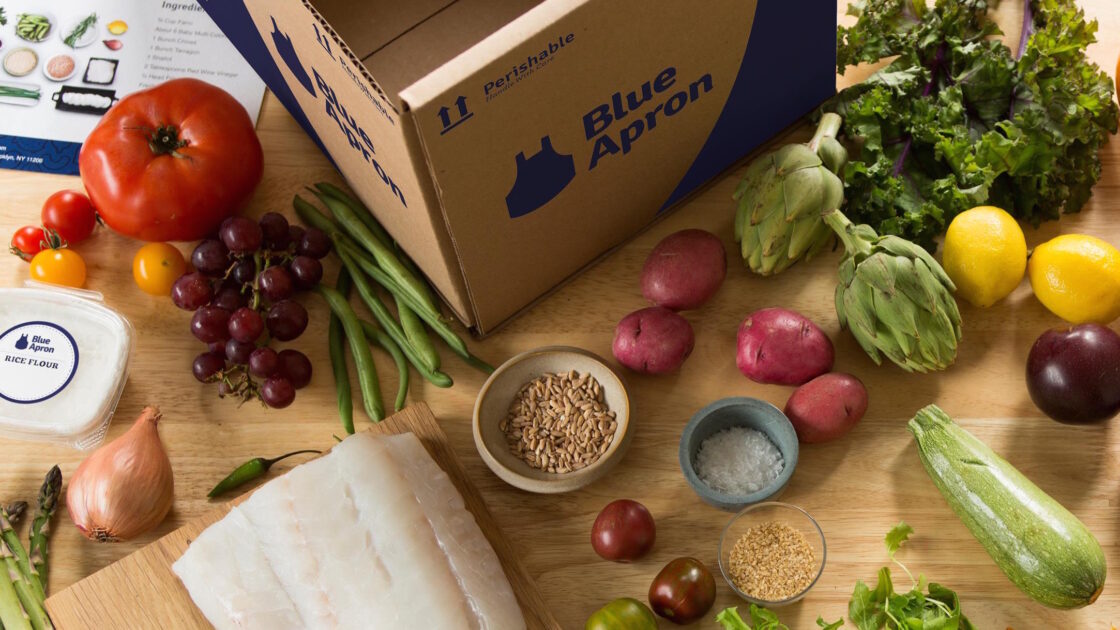Are Meal Kits Better for the Planet?

Meal kits are the food trend du jour with options that run the gamut from the DIY recipes that borderline on home cooking classes, to the frozen prepared foods reheated in a just few minutes.
Many are hailing meal kits as the future of food—helping keep us on track with healthy eating plans and limiting our exposure to temptations that dot the supermarket aisles.
But for all their benefits, there are the downsides: namely the excessive packaging and shipping small portions of food to all ends of the country. But there may be a significant if accidental upside, too: decreased food waste.
That’s the finding of a recent study conducted by sustainability nonprofit BSR, which looked at Blue Apron’s food waste. It’s the first time a company like this has released data on its food waste (Blue Apron commissioned the study.)
And according to the research, it’s good news for Blue Apron fans; the company creates a whopping 62 percent less waste than what most people produce at home with fresh ingredients from the supermarket.
BSR looked at a week’s worth of Blue Apron meals including the ingredients in, what was left after meal prep, and what was donated. Those figures were compared with USDA averages for food wasted at supermarkets in those specific categories.
“The Blue Apron facility threw out 5.5 percent of food; grocery stores threw out 10.5 percent,” reports Fast Company.
BSR also looked at consumer habits once they received the Blue Apron boxes at home. And compared with USDA on home food waste, the difference was astounding: only 7.6 percent of Blue Apron ingredients were tossed, compared with an estimated 23.9 percent if consumers were to make the meals with store-bought ingredients.
Even accounting for a margin of error, the numbers are significant. The reason for the discrepancies is rather obvious; making a meal at home means buying a whole head of cabbage rather than a cup-size serving, a bunch of celery rather than just a rib or two. But companies like Blue Apron do that bulk buying for the customer, essentially eliminating the rest of that pepper turning to mush in your crisper.
“Our vision is to build a better food system, and change the way that food is produced, distributed, and consumed,” Matt Salzberg, CEO of Blue Apron told Fast Company. “One of the things that we’ve been working on internally is to really, in a systematic and in data-driven way, quantify our end-to-end sustainability impact. Food waste is just one part of that picture, but an important part.”
And, says, Fast Company, there may be even more food waste prevention before it even makes its way to Blue Apron’s kitchens, “Blue Apron works directly with farmers to forecast demand based on data from its customers, and that also helps limit waste.”
“One way to think about it is if you’re a grocery store, you buy a lot of perishable food and put it on your shelf, and hope that someone shows up to buy it from you before it rots,” says Salzberg. “With us, we know our demand ahead of time, before we ever get any food into our centers. Then we can have a just-in-time inventory fulfillment model because we have these direct customer connections in a subscription.”
There have been many questions about the future of meal kits–do they have the staying power? Are they worth it? Are they good? Whether the saving on food waste cancels out the shipping and packaging waste has not yet been measured, but with recycling options abundant and clean fuel becoming the norm, meal kits may just prove to have staying power after all.
Food waste is a global epidemic–as much as one-third of all edible food goes uneaten–about 1.3 billion tons; 40 percent of food in the U.S. goes to waste every year.
Find Jill on Twitter and Instagram
Related on Organic Authority
Veestro’s Plant-Based Frozen Food Heats Up the Meal Delivery Kit Scene
Is a Meal Delivery Service an Easy Answer to ‘What’s for Dinner?’
The Gray Kitchen? New York Times to Offer Meal Delivery Kits
Image: Blue Apron

